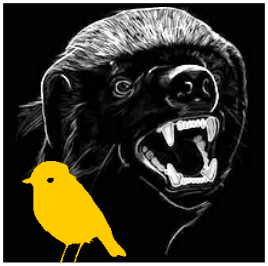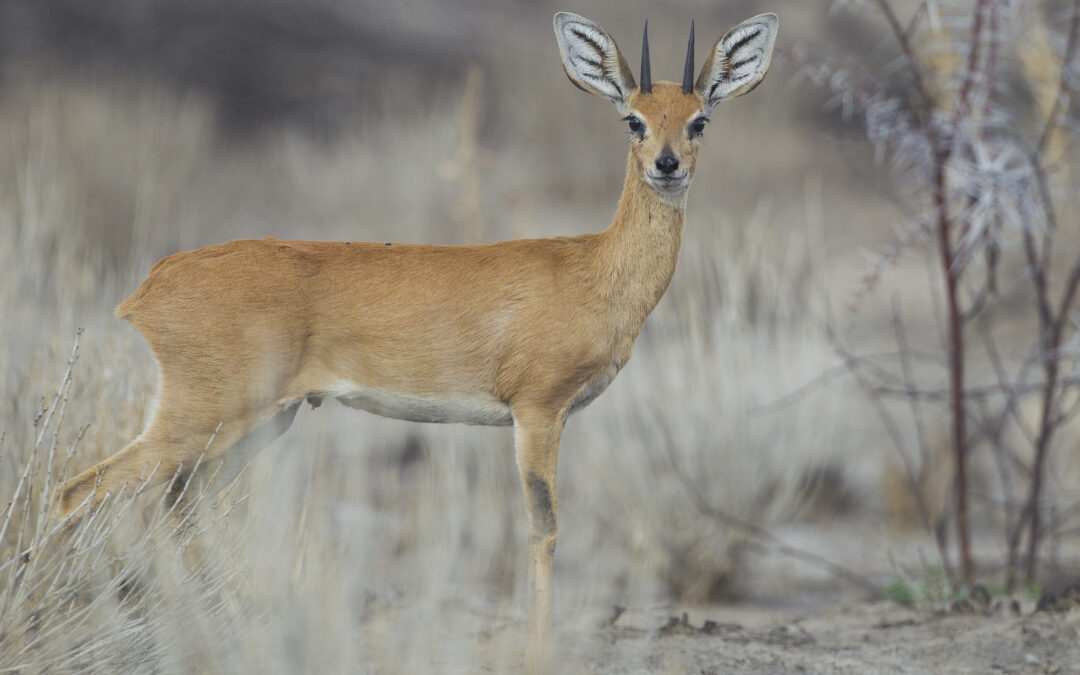The steenbok is uniquely diminutive among the ungulates of semi-desert dunes and plains.

Prof. Mumblebard claims: “Ungulates span an extreme range of body sizes. They also occur in many different climates, with the most drought-adapted forms being able to forgo drinking for long periods. Diminutive species of hoofed mammals are, however, too small to follow rain nomadically and cannot survive without the cover of plants and rocks. For these reasons, no ungulate smaller than 15 kilograms in adulthood has penetrated semi-desert on loose sand or flat terrain, where the exposure to predators as well as sun and wind is prohibitive.”
Robin and the Honey Badger respond: “Some 35 species of ruminants can be categorised as having body mass less than 15 kilograms – this extremely small size warranting the scientific adoption of the previously informal word ‘bambis’. Although all bambis are vulnerable to aridity owing to their small size, one globally unique species is the steenbok, of which some southern African populations reside permanently in semi-desert dunes and plains. This ungulate is able to survive despite the extreme scarcity of cover by virtue of the availability of forms of shelter and food which are not immediately apparent in these semi-deserts. Uniquely for an ungulate unable to excavate with its head, the steenbok is known to evade predators by bolting down holes made by the aardvark. It is also known to hide and suckle its infants below ground level. Given its propensity for utilising burrows, the steenbok probably also seeks refuge underground from the sun. In terms of food, small succulents and edible geophytes are surprisingly reliable in the Karoo, in the Kalahari, and at the edge of the Namib. Despite being inconspicuous, these plants supply the steenbok with enough water to compensate partly for the lack of shade. The ability to excavate geophytes adds a further layer of intrigue to the remarkable ability of this bambi to defy aridity: the small hooves and spindly legs of the steenbok are oddly adept at digging. Our new insight is that the extraordinary penetration by the steenbok of arid dunes and plains in southern Africa reflects forms of life below the soil surface – particularly fossorial mammals far larger than the steenbok, and tubers which remain turgid even in drought – that fail to reach the edges of most deserts on Earth.”

Please join us here at the Bio-edge with your own comments. In the discussion below we encourage links to any evidence supporting either Prof. Mumblebard or Robin and the Honey Badger. Illustrations are welcome but please cite all sources or we may be forced under copyright to delete your comment.
***
Featured image: The steenbok (Raphicerus campestris) by Yathin S Krishnappa (CC BY-SA 3.0, Male Steenbok)

